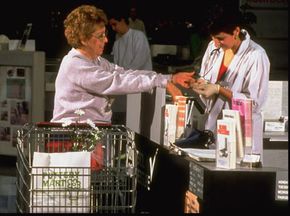We've all been told to keep our cholesterol down. High cholesterol leads to hardened arteries, coronary heart disease and even strokes. Anyone can have high cholesterol: men, women, the young, the old, the skinny and the not-so-skinny.
Cholesterol, however, gets a bad rap. Unwanted and unloved, the waxy compound earns its reputation from the company it keeps. On its own, cholesterol is quite handy around the body. It helps form cell membranes. It's crucial for growth in babies, and our bodies make most of it. So far, so good.
Advertisement
A cholesterol molecule is a lipid, which is a category of water-insoluble substances such as waxes, oils and fats. Because it can't dissolve in water or watery substances like blood, cholesterol can't move around in the bloodstream on its own. It has to catch a ride.
In order to travel around the body, cholesterol combines with protein, forming a lipoprotein (lipid + protein). The protein actually coats the cholesterol. However, not all lipoproteins are created equal. When the lipoprotein has more protein than cholesterol, it resembles a Ferrari, gunning through your body without stopping until the cholesterol arrives at your liver, where it's converted into bile acids. These Ferraris are high-density lipoproteins (HDLs), which most of us just call "good" cholesterol.
When the lipoprotein has more cholesterol than protein, however, this makes for a rickety ride, and that jalopy doesn't get too far. Cells have special receptors that bind tightly to these lipoproteins as they pass [source: Cohen]. This low-density lipoprotein (LDL), or "bad" cholesterol, sputters down the road, careening off the arteries, running into things and leaving bits all over the place. While the HDL Ferrari sees a pileup and nimbly speeds around it, the LDL jalopy crashes right into it, adding to the jumble of tangled fenders and tailpipes (or platelets and plaque).
Now the HDLs actually are kind enough to offer a lift to any stray LDLs they encounter. The problem is that our levels of HDLs and LDLs get out of whack. There are more crazy LDLs lurching around than there are responsible HDLs to pick them up. Genetics are as at fault as steak and eggs. We'll talk more about the differences between HDLs and LDLs in the next section.
Advertisement




